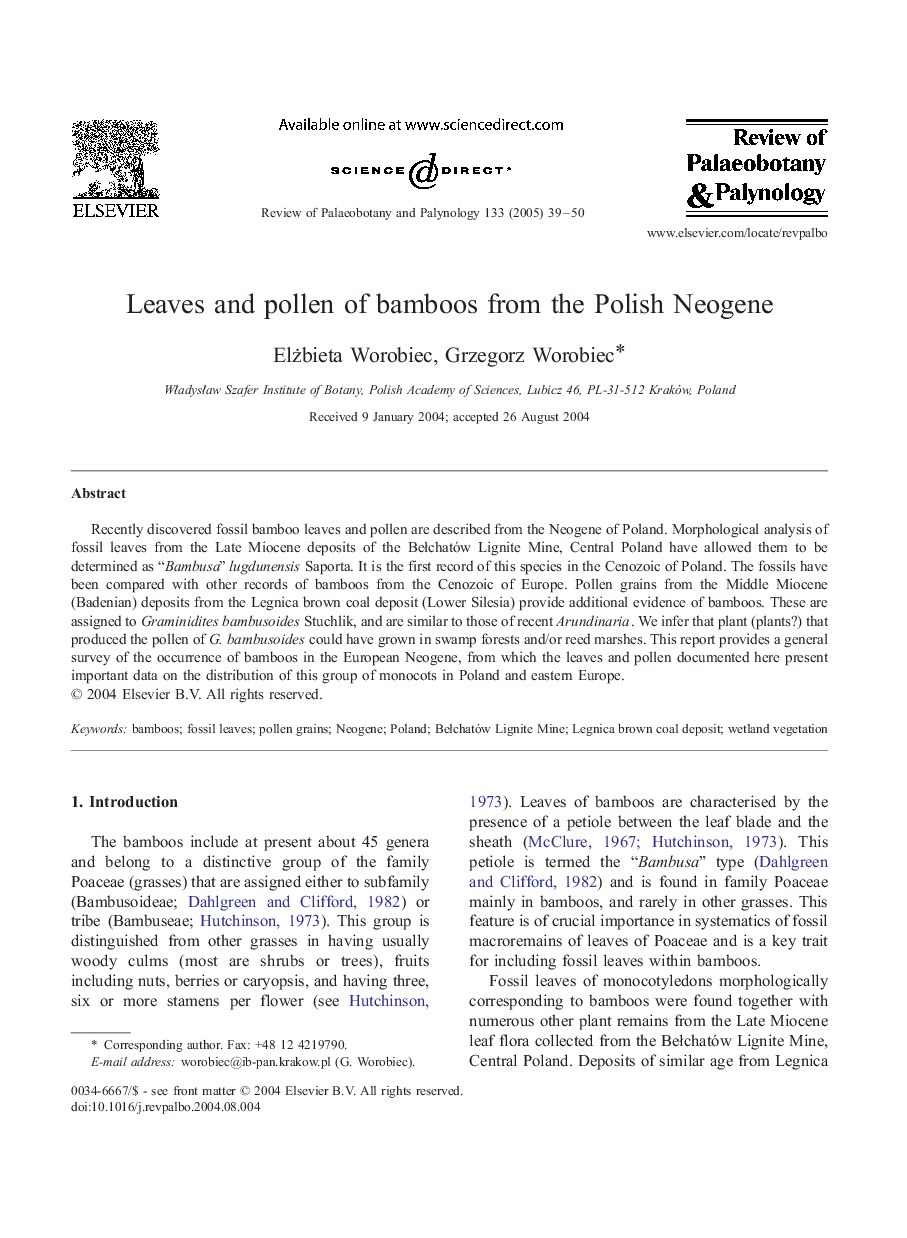| Article ID | Journal | Published Year | Pages | File Type |
|---|---|---|---|---|
| 10122127 | Review of Palaeobotany and Palynology | 2005 | 12 Pages |
Abstract
Recently discovered fossil bamboo leaves and pollen are described from the Neogene of Poland. Morphological analysis of fossil leaves from the Late Miocene deposits of the BeÅchatów Lignite Mine, Central Poland have allowed them to be determined as “Bambusa” lugdunensis Saporta. It is the first record of this species in the Cenozoic of Poland. The fossils have been compared with other records of bamboos from the Cenozoic of Europe. Pollen grains from the Middle Miocene (Badenian) deposits from the Legnica brown coal deposit (Lower Silesia) provide additional evidence of bamboos. These are assigned to Graminidites bambusoides Stuchlik, and are similar to those of recent Arundinaria. We infer that plant (plants?) that produced the pollen of G. bambusoides could have grown in swamp forests and/or reed marshes. This report provides a general survey of the occurrence of bamboos in the European Neogene, from which the leaves and pollen documented here present important data on the distribution of this group of monocots in Poland and eastern Europe.
Related Topics
Physical Sciences and Engineering
Earth and Planetary Sciences
Palaeontology
Authors
Elżbieta Worobiec, Grzegorz Worobiec,
